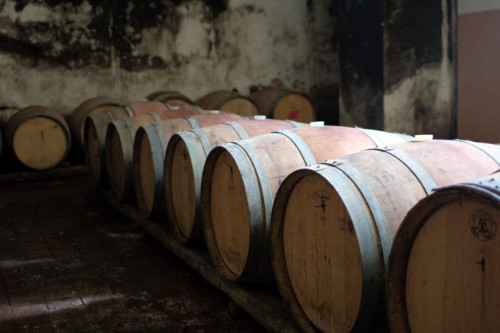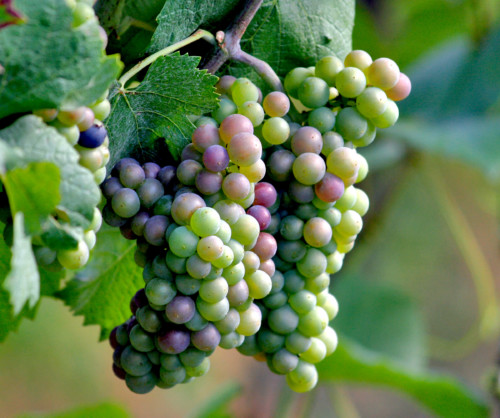The Future of Wine is Organic, Natural, Biodynamic
When most Americans think of fine wine, they think of dimly-lit dining rooms filled with old men in suits spending obscene amounts on antique bottles. When I think of America’s attitude towards fine wine, I always think of the television show Frasier: the main character, Frasier, and his brother, Niles, are sophisticated to the point of pretention, and one of the ways this is shown is their snobbish attitude towards wine. In one episode, they compete to be the “corkmaster” of an exclusive wine-drinkers club. Taking turns to taste the wine, they spit increasingly absurd adjectives at each other. The whole scenario is played for laughs.
The episode aired seventeen years ago, but the elements it illustrates have persisted in the minds of most Americans. Stuffy room, pretentious older man, and obscene amounts of money spent on single bottles of wine.
This divide did not start in modern America. In ancient Mesopotamia, wine could be as much as ten times as expensive as beer. So, it was the province of kings and priests, while everyday workmen were often paid in beer. Thousands of years later, something like this divide has continued to prevail in America. Elites like Thomas Jefferson imported huge quantities of European wine, while most people drank what was cheap. At first this was apple cider and rum, then whiskey. But, when massive amounts of Northern Europeans, primarily Germans, immigrated to America, they brought their knowledge of brewing with them. So, for the last century, more than anything else America has been a beer drinking nation, but what that means is changing.
Today, beer is still America’s most popular alcoholic beverage. Although it’s losing ground against wine and spirits, beer still accounts for about half the alcohol consumed in this country. But, while beer may be losing market share, craft beer is making major headway. We are now almost 40 years into the craft beer revolution, and it has changed the way consumers chose and think about beer. Local, small batch, organic, experimental and sustainable are all common selling points for beer. The way breweries have engaged with consumers has led to a consumer model in which the average drinker can become tremendously more knowledgeable about beer than wine. More importantly, this ethos has moved from beer to other spirits, leading to the inevitable bourbon, tequila, gin, and even vodka renaissances.
For the last century, a America has been a beer drinking nation, but what that means is changing.
So why should we care about biodynamic wine? During this revolution, it may seem as though wine stands apart from other alcoholic beverages. Even young American’s that drink a lot of wine don’t seem to think of wine the same way as other spirits. You would be hard-pressed to find a small winery that had as big a following among millennials as The Alchemist or Russian River have for their IPAS.
A big part of that has to do with the fact that wine is intimidating in a unique way. After forty years of growth there are now around 5,000 breweries in the United States. In contrast, in France alone there are nearly 30,000 wineries. Wine also has different regional classifications, a staggering array of grapes used, and the ever-confusing vintages. Many consumers see wine as overpriced and pretentious or cheap and bad (many of us had bad experiences with boxed wine when we were younger). As a result, many of us don’t bother learning anything about wine beyond the basics. However, a new generation of sommeliers is changing that perception, and doing it in a way which is tailor-made for the craft beer generation.
This new generation of sommeliers are more likely to sport rolled up sleeves, beards, and tattoos instead of tastevins. Increasingly, women and minorities are breaking the stranglehold white men had on all sections of the wine industry, as sommeliers also move away from the traditional strongholds of fine wine– Burgundy and Bordeaux, with a smattering of Italian and Spanish offerings. The rising price of these classics means that sommeliers have had to be creative with their selections and recommendations– diving into the deep bench of overlooked wine regions (everywhere from Australia to Croatia) while emphasizing different styles of winemaking– specifically organic, natural, and biodynamic.
Organic Wine
To many reading this, the benefits of drinking organic wine will seem obvious. Just as in other kinds of crop-raising, many vineyards overuse herbicides and insecticides, and these chemicals have become increasingly common, even in regions of Europe that are renowned for their ancient wine making traditions. As within other agricultural industries, however, there’s now a pushback against modern agricultural methods: many small producers are abandoning chemicals and using other methods to keep their vines healthy. As with “organic” designations everywhere, organic wine deals with a legal maze. In Europe, for example, wine cannot be called “organic” but instead is “made with organic grapes”, while in the US labelling is controlled by the USDA. But, more than a label, organic winemaking is a philosophy, one that seems to be growing faster than conventional growers.
Natural Wine
Natural wine is wine made without using chemicals, like organic wine. However, the “natural” designation takes it a step further. Natural wine is more of a philosophy then a process. The idea is to produce wine using a minimal amount of technology. This can mean anything from picking the grapes and pressing the wine by hand (or foot) to eschewing climate control while the wine is aging. As a result, natural wine is interesting but lacks the consistency of a product. This has made it the darling of many wine lovers, who treasure the authenticity and uniqueness of each bottle.
Biodynamic Wine
Biodynamic winemaking, like all biodynamic agriculture, originated in the mind of Austrian thinker Rudolph Steiner. Steiner, who died in 1925, sought to create a synthesis between science and spirituality. Organic before organic, Steiner looked at the land as a single living ecosystem, and believed that agricultural practices should try to benefit the whole ecosystem. Looking to the past for inspiration, Steiner created different natural chemical preparations that are used to keep the land healthy. While Steiner’s work has a reputation as being hokey and cultish, his methods have produced results. As with natural wine, the idea of connecting with your ancestors and creating a product similar to theirs has a natural appeal.
So, what does this mean for wine consumers? First off, it means that you are probably going to start seeing more funky wines, from different regions, made with grapes you may not recognize, because wine makers trained in these new (old) methods in Europe are now returning to all corners of the globe to create their own wine traditions. Nowhere is this more obvious than in the United States, where wine-making has slipped its traditional boundaries of California and spread as far as New York, Virginia, and Wisconsin. Globally, the so called “new world” wine-producing countries (The America’s Oceana, parts of Africa) are coming of age. Countries with historic winemaking traditions and without are planting grapes and experimenting with new kinds of wine. All of this adds new incentive for wine lovers and curious newcomers alike to explore the new cultural frontier of winemaking– a centuries-old trade that continually returns to the earth even as its influences expand.








































